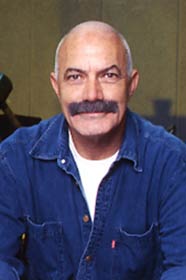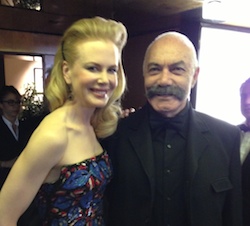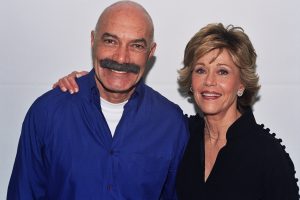




Three talented actors, Ewan McGregor, Naomi Watts, and Ryan Gosling, are totally wasted in “Stay,” a pretentious supernatural thriller that's located in the space between desire and fear, reality and illusion, life and death–in other words, in a cinematic limbo.
Wishing to depict an “alternate” world, “Stay” is a movie that doesn't believe in any rules or parameters for either its narrative or characters, resulting in a story in which everything and anything is possible. As soon as you think you got a grip on the story, there's a plot development that throws the movie off balance. Getting worse and worse, the yarn deteriorates until it self-destructs. Rip-off ending, which is cheating by its own rules, makes you feel that the entire experience was a waste of time.
The gifted, versatile director Marc Forster (“Everything Put Together,” “Monster's Ball,” “Finding Neverland”) is defeated by a preposterous script from David Benioff (“Troy,” “The 25th Hour”). His stylistic flourishes, which borrow from “Don't Look Now” and “Petulia,” feel like desperate attempts to rescue a project that went awry, and may explain why the movie has been on a shelves for so long.
Benioff has seen too many surreal movies and supernatural horror thrillers, and the influence of Nicholas Roeg's “Don't Look Now” or Richard Lester's “Petulia” is obvious on the movie's text as well as style. On the one hand, “Stay” wants to belong in the honorable company of the paranoid thrillers of the 1960s and 1970s, and on the other, it pretends to be an existential exploration of fragile identities in the new and turbulent post-modern world.
In the press notes, “Stay” is described as a “moving and mesmerizing double story that plunges beneath the surface of ordinary experience to take a man on a spiraling descent through the mysteries of identity, dreams, and the very fabric of existence.” Should you see the film, I recommend that you disregard that description.
On the surface, and judging by its first reel, “Stay” appears to be the suspenseful story of dedicated New York psychiatrist Sam Foster (Ewan McGregor, miscast) and his urgent attempt to stop a quiet yet eccentric young patient he had inherited, Henry Lethem (Ryan Gosling, who looks bewildered throughout the picture), from carrying out a planned suicide on the eve of his twenty-first birthday.
However, behind the primary tale, there seems to be a more unsettling and surreal mystery about the reality-shattering effect of Henry's investigation on Sam's identity and perception of reality. Gradually, Sam is drawn deeper into the web of Henry's life, and then into the labyrinth of his own subconscious.
The process puts stress on Sam's relationship with his artist girlfriend and former patient Lila (Naomi Watts, underutilized). Soon, Sam's presumably tight grip on the surrounding world begins to melt away. Faced with increasingly surreal encounters, set in a fake Manhattan transformed into a wild dreamscape, Sam can no longer figure out what's true and what's happening in his head, nor where he begins and Henry ends. Borrowing heavily from Bergman's masterpiece, “Persona,” Sam and Henry have taken on each other's personalities.
Key questions with which the movie flirts but never fully explores are: Who is Henry Lethem, and why is he fracturing Sam's reality so profoundly It turns out, he's a despondent college student obsessed with the romance and tragedy of death. Henry becomes Sam's patient by accident, when his own therapist, Dr. Beth Levy (an intense but unconvincing Janeane Garofalo) mysteriously takes ill, which is the fate of all the characters, sooner or later.
In their first meeting, Henry shocks Sam with his resolute plan to take his own life this coming Saturday at midnight, spurring Sam into an obsessive quest to keep Henry alive no matter the cost. Clues and suspense simultaneously build to the story's preposterous climax on the Brooklyn Bridge, where the story begins, lending the film some symmetry if not sense. Clearly, what's happening to Sam and Henry is taking place not in this world, but in place between living and dying, a place no one can stay for too long (hence one meaning of the title).
Forster tries to create an intensely symbolic and hypnotically visual world of dreams, delusions, and unsettling states of mind. From the film's opening scene, events take a deliberate curve into the surreal. Though we immediately sense that all the characters are intertwined, we feel manipulated because the script fails to provide acceptable reasoning for these connections.
As in “Persona” and other movies, at first glance, it seems that Sam and Henry have little in common, that they are just bound together by fate. Sam begins as savvy, successful, emotionally guarded psychiatrist who usually handles the straightforward cases of neurotic professionals. he's a man for whom rationality means everything; it the basis of his modus operandi. However, gradually, he deteriorates until he becomes the thing that frightens him the most, delusional.
As Henry's desperate need to die is met with Sam's urgent desire for Henry to stay among the living, the two become increasingly enmeshed, and not just in their therapy sessions. Sam's life is taken over by his concern for Henry, until Henry's memories, fears, and hallucinations, begin to feel as if they were his own. With their identities blurred and dissolved into one another, Henry and Sam are caught in an “in between” world that's neither life nor death.
As viewers, we sense trouble as soon as we find out that Sam has violated the ethics of his profession and got romantically involved with one of his patients. In a rather perverse way, Sam considers Lila, a fragile, sensitive artist he had saved from attempted suicide, to be his most cherished successe. Not surprisingly, Lila immediately connects with Henry, recognizing him as a kindred haunted soul.
Facing her own psyche's dark demons, Lila is a talented, acutely sensitive artist who's recovering from a near-fatal suicide attempt that links her inextricably to her boyfriend's struggle to save Henry. Angel-like she's a woman who once needed saving herself, but now has the chance helping Sam save Henry, convince him to stay among the living.
Like Sam's, Lila's personal reality becomes increasingly questionable, until she too becomes bound up in Henry's view of the world. Though Lila is meant to be the film's anchor and light (she's at once acutely aware of tragedy and yet quite hopeful), her part is underdeveloped, and she all but disappears in the second half of the story.
The catalyst behind Sam and Lila's actions is Henry, the downcast college student who idolizes an artist named Tristan Reveau, a tragic romantic who famously announced his suicide in advance as a work of art. The great enigma is how someone as bright, promising, and seemingly in control of the future as Henry, could be so compelled by death.
The role reversal between Sam and Henry gets more explicit, when Sam becomes the patient, and Henry becomes the doctor. Sam's vulnerability is revealed when he begins to realize that his desperate need to help others is a camouflage for a need to help himself; like Henry, he's in need for redemption.
Henry's quest to be saved brings him into contact a blind psychiatrist, Dr. Leon Patterson (Bob Hoskins), who is either Sam's mentor or Henry's deceased father–depending on your perception. The scene in which Leon regains his sight with Henry's help is played as a metaphor and reality, tapping into the roots of father-son relationships, suggesting the ways children wish their parent can see them for whom they really are. Like every element in the film, Leon's blindness is part of a symbolic structure but also part of reality. That both interpretations are valid reaffirms my feelings about the entire film.
The title, which initially bears multiple and even conflicted meanings, is explained literally at the end. No one wants their friends to leave them; they want things and people to stay the way they are. It's that sense of need that ties together the characters in “Stay,”” both within and without the alternate reality.
Forster seems to be drawn to stories with intensely dramatic power that explore the shadow-lands, where reality, imagination, and illusion meet. He treats “Stay” not as a standard thriller but as a dream realm with its own (non)rules. Visually, Forster tries to compensate with an elaborate design that relies on claculated use of colors and repetition of behaviors and scenes of dialogues. But for what purpose and to what effect, you might ask, after seeing the disappointing film.
As noted, in most films, there's some kind of rational or narrative explanation for the way story unfolds and the characters behave. However, in “Stay,” there's no rational or narrative logic, and everything that happens might be an illusion and/or reality.










